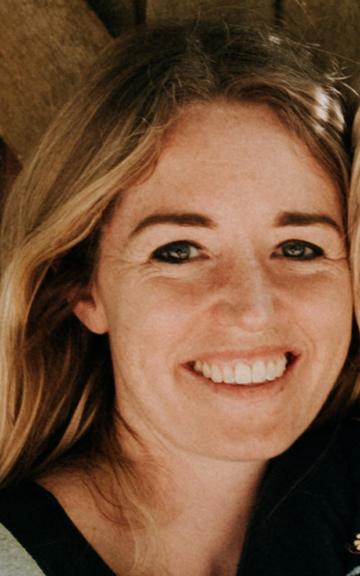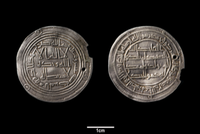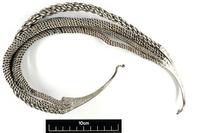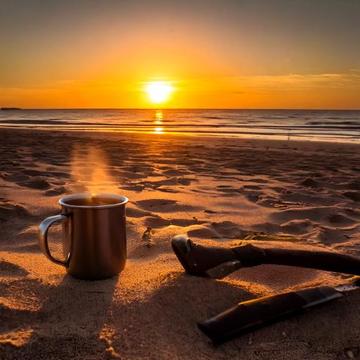Staff Spotlight: Dr Jane Kershaw
Staff Spotlight: Dr Jane Kershaw

Dr Jane Kershaw is the first Gad Rausing Associate Professor of Viking Age Archaeology here at the School. This will be the University’s first academic post to focus exclusively on the Viking Age and has been made possible by a gift from Kirsten Rausing and named in memory of her father Dr Gad Rausing, an eminent scholar in the field of Scandinavian archaeology. The post will help to advance research into this important period of history while also ensuring that graduate students receive the training they need to become the Viking Age archaeologists of the future.
Ten questions for the Associate Professor of Viking Age Archaeology
Qu. 1. You completed an undergraduate degree in history but then changed to archaeology for your graduate studies, why?
I took an early Anglo-Saxon archaeology module within my history degree and loved it: the early medieval period was far away enough that there was a mystery to it but not so far away as to seem unrelatable. The archaeological and historical sources are complementary, but the written sources come from quite entrenched perspectives. Of course, archaeological sources are biased too, but they are more direct and have more potential for new discoveries. It had to be archaeology.

Qu. 2. The Viking Age is sometimes referred to as the ‘Silver Age’. Why was silver so valued by the Vikings?
Silver was a very attractive alternative form of wealth for those without access to land or cattle. It was versatile, and could be made into ingots for storage, jewellery for showing off, or hack-silver for payment. It could be divided up and passed on. Unlike livestock, silver couldn’t get sick; it couldn’t ‘fail’ one year like a harvest could. So, it’s a very resilient and valuable resource for making marriage payments, paying debts or fines, or buying items at a market. It’s also a prestige item that has travelled a long way: people may be surprised to learn silver wasn’t mined in Scandinavia in the Viking Age. All silver was imported, and most of it came from the Islamic Caliphate, especially modern-day Iraq, Iran and Central Asia.
Qu. 3. Why should we all be (more) interested in lead mining?
Lead mining has been core to Britain’s economy for centuries. It was a major export in the early medieval period and its extraction, smelting, packing and transport involved whole communities. The remains of more recent mining are etched onto the landscape today: to trace it back in time tells the history of these places and the people who worked there.
It’s also a research area with huge potential: by analysing stable isotopes in the lead, we can trace its origins. We’ve recently been able to show that lead mining in the North Pennines was a major industry in the Viking Age. North Pennines lead was exported to Scandinavia at the very time of the early Viking raids – this gives a whole new dimension to contacts at the start of the Viking Age, and is something we had no idea about!

Qu. 4. You are an archaeologist but you use and interpret very sophisticated scientific methods and techniques for your research to determine the origins of metals used in Viking silver artefacts. How do you make cross-disciplinary research work?
Cross-disciplinary research is hugely exciting because it’s an opportunity to learn new approaches and pose questions you didn’t think could be answered. I think it works when both sides embrace the learning opportunity – even if it’s sometimes uncomfortable. The goal is to get to the point where you place your disciplinary assumptions to one side: to be truly open to new ideas.
Qu. 5. What can we learn from metal analysis of silver?
So much! One goal using methods such as lead isotope and trace element analyses is to provenance the metal. That tells us where precious resources are mined, and potentially on what scale, which generates insights into who controls those resources, and thus where power lies in past societies. Sometimes those insights can totally change the accepted narrative. In our work on early Islamic dirhams, for instance, we found evidence for silver mining at the border of the Islamic and Byzantine frontier. This raised the question of whether frequent wars fought there were about control of resources, rather than part of a long-standing Holy War.
We can also see the movement of metal, which reveals connections between different societies. The Vikings got the majority of their silver from the Islamic Caliphate from the very start of the Viking Age. They must have had strong eastern trade links from a much earlier date than we currently think.
Qu. 6. Is there a stereotypical inaccuracy about the Vikings that you would like to challenge?
Because of their warrior image, their interactions with other cultures are usually characterised as violent and exploitative. They could be, but the Vikings made an extraordinary range of cultural connections, adapted to new physical environments and assimilated with existing populations. They were pragmatic, resourceful and open-minded.
Qu. 7. What advice would you give to a DPhil student about how best to manage their first year on their degree?
I would say keep a flexible mindset. Research doesn’t always go according to plan: museums close, somebody carries out your research before you do, you realise there’s far too much data to collect etc. Most people tweak/ dramatically change their research proposal in the first year in response to these realities. So, go with the flow (your funding body won’t mind).

Image credit: Adobe Firefly
Qu. 8. If you were a guest on Desert Island Discs, what luxury item would you take with you to the Island? (In accordance with the DI rules you can’t use it to escape or communicate).
Is a machete a luxury item? Failing that, a full tea set, with loose-leaf, earl grey tea. A cup of tea solves most things (granted, perhaps not getting off an island).
Qu. 9. If you could travel back in time, could you survive as a woman living in a Viking settlement in England? What do you think would be the biggest day-to-day challenge?
What a great question! Yes, I could survive (notwithstanding childbirth, which maybe I wouldn’t). But it wouldn’t be ‘fun’. The biggest challenges would probably be terrible food and looking after young children when so much physical work – inside and outside the home- was required. Open hearths (fires), wells, farm animals…… lots of hazards for small children!
Qu. 10. What research question about the Vikings would you most like to tackle and answer (given no constraints)?
There are many. The Viking Age is highly mobile: I would like to understand mobility out of and, especially, into Scandinavia– both at the meta level, identifying broad trends in the aDNA and isotope data, and also at the level of the individual. Recent aDNA results show that women with English ancestry were buried in full Scandinavian dress in Norway and Sweden. It’s a surprising result and I’d love to understand the dynamics behind that.



